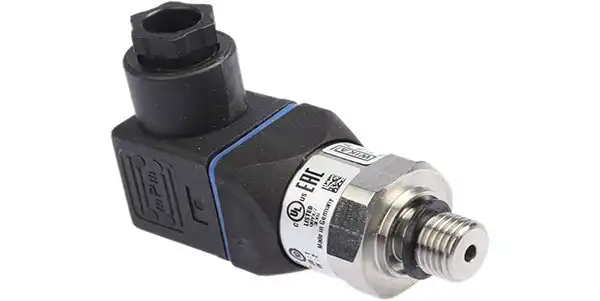Types of Pressure Sensors
Devices that can measure pressure and provide remote electrical signals are collectively referred to as pressure sensors. The pressure sensor is an important part of the pressure detection instrument, and its structural types are various, and the common types are strain type, piezoresistive type, capacitive type, piezoelectric type, and vibration frequency pressure sensor and so on. In addition, there are photoelectric, optical fiber, ultrasonic pressure sensors and so on. The pressure sensor can directly convert the measured pressure into various forms of electrical signals, which is convenient to meet the requirements of centralized detection and control of automation systems, so it is widely used in industrial production.
Types of pressure sensors:
1. Strain Gauge Pressure Sensor
A strain gauge pressure sensor is a sensor that indirectly measures pressure by measuring the strain of various elastic elements. According to the different materials, strain elements can be divided into two categories: metals and semiconductors. The working principle of strain elements is based on the "strain effect" of conductors and semiconductors, that is, when the conductor and semiconductor materials undergo mechanical deformation, their resistance value will change.
When the wire is subjected to external force, its length and the cross-sectional area will change, and its resistance value will change. If the wire is stretched by an external force, its length will increase, while the cross-sectional area will decrease, and the resistance value will increase. big. When the wire is compressed by an external force, the length decreases and the cross-section increases, and the resistance value decreases. As long as the change in the voltage applied across the resistor is measured, the strain of the strained wire can be obtained.
In addition to the relevant scientific knowledge of pressure sensors, click here to learn more about temperature sensor.
2. Piezoresistive Pressure Sensors
A piezoresistive pressure sensor refers to a sensor made by using the piezoresistive effect of single crystal silicon material and integrated circuit technology. After the single crystal silicon material is subjected to the force, the resistivity changes and the electrical signal output proportional to the force change can be obtained through the measurement circuit. It is also known as a diffused silicon piezoresistive pressure sensor. It is different from the adhesive strain gauge, which needs to indirectly feel the external force through the elastic sensitive element but directly feel the measured pressure through the silicon diaphragm.
Piezoresistive pressure sensors are mainly based on the piezoresistive effect. The piezoresistive effect is used to describe the change in resistance of a material under mechanical stress. Unlike the piezoelectric effect, the piezoresistive effect only produces impedance changes and does not produce electrical charges.
Piezoresistive effects have been found in most metallic and semiconducting materials. Among them, the piezoresistive effect in semiconductor materials is much larger than that in metals. Since silicon is the main raw material of today's integrated circuits, the application of piezoresistive elements made of silicon becomes very meaningful. Silicon's resistance changes not only from the stress-related geometric deformation but also from the stress-related resistance of the material itself, making its degree factor hundreds of times greater than that of metals. The resistance change of N-type silicon is mainly due to the redistribution of carriers between the conduction band valleys of different mobilities caused by the displacement of its three conduction band valley pairs, which in turn changes the mobility of electrons in different flow directions. The second is due to the change from the effective mass associated with the change in the shape of the conduction band valley. In p-type silicon, this phenomenon becomes more complex and also leads to equivalent mass change and hole conversion.
Piezoresistive pressure sensors are generally connected to a Wheatstone bridge through leads. Usually, there is no external pressure on the sensitive core, and the bridge is in a balanced state (called zero position). When the sensor is pressurized, the chip resistance changes and the bridge will lose balance. If a constant current or voltage power supply is added to the bridge, the bridge will output a voltage signal corresponding to the pressure, so that the resistance change of the sensor is converted into a pressure signal output through the bridge. The bridge detects the change of the resistance value, after amplification, and then through the conversion of voltage and current, it is converted into a corresponding current signal, and the current signal is compensated by the nonlinear correction loop, that is, the input voltage has a linear corresponding relationship of 4. ~20mA standard output signal.
In order to reduce the influence of temperature change on the core resistance value and improve the measurement accuracy, the pressure sensor adopts temperature compensation measures to maintain a high level of technical indicators such as zero drift, sensitivity, linearity, and stability.
 Track Your Order
Track Your Order




